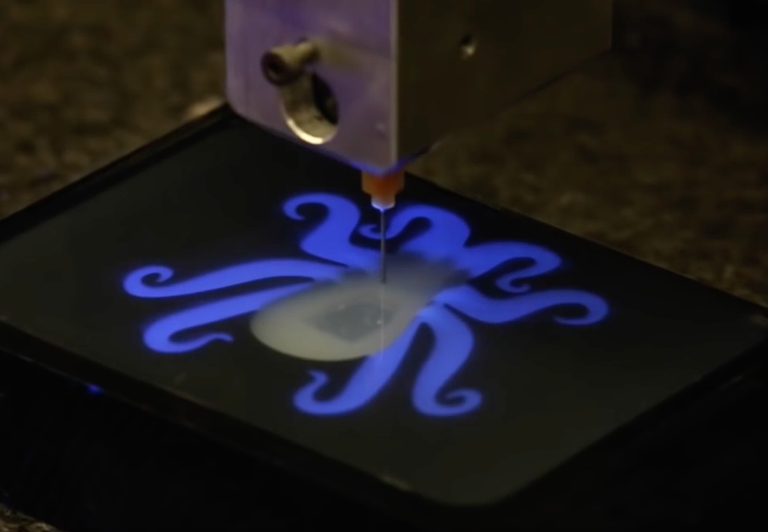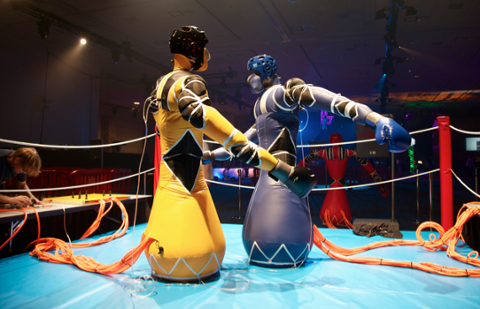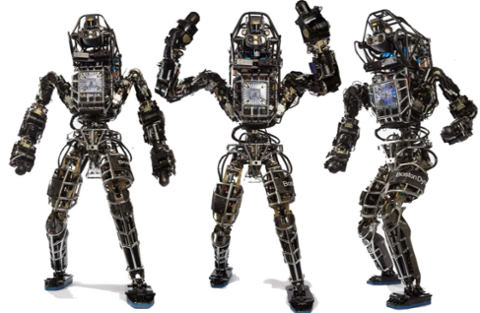The Octobot Hints at Robotics' Squishy Future
The term ‘robotics’ usually conjures up images of machines made out of metals and hard polymers, all sharp angles and grinding servos. The robots of the future, however, may end up looking a little softer—at least if a current line of research catches the interest of scientists and manufacturers. In the latest edition of the scientific journal Nature, a group of Harvard researchers unveil the “Octobot,” described as a combination of “a 3d-printed soft polymeric robot with microfluidic logic and hydrogen peroxide as an onboard fuel.” In other words, this is a soft robot that powers itself via an onboard chemical reaction. Gas generated from that reaction flows through channels to power the tentacles, in a sequence governed by the internal system. Right now, the machine can only flex those limbs; it’s not outside the realm of possibility, however, that future versions could interact with the surrounding environment. A soft, autonomous robot potentially has a lot of real-world applications. The lack of rigid components means it could squeeze into tight spaces, making it a candidate for exploration, observation, and even search-and-rescue tasks. The plushy body would decrease the risk of damage or injury when interacting with humans, animals, or delicate objects. The Octobot isn’t the first example of researchers pursuing soft robots. A few years ago, scientists at MIT’s Computer Science and Artificial Intelligence Laboratory (CSAIL) went public with their work into squishy automatons. An autonomous automaton, however, is something of a new twist on the concept. Big tech firms have spent the past few years flirting with the possibilities of robotics. Between 2013 and 2014, for example, Google acquired seven robotics firms, including Boston Dynamics, builder of the terrifyingly mobile BigDog and Cheetah. Other companies have pursued robotics as part of autonomous-driving initiatives. If any of them decide to start mass-producing robots for personal and commercial use, there’s a good chance the resulting machines could look more like a rubbery toy than the Terminator.


